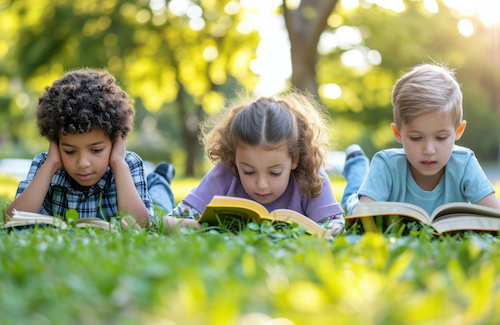How to balance summer break with summer learning loss
Key points:
As classrooms close until next fall, talk of the dreaded summer slide increases, particularly as students are still struggling to gain ground lost during the pandemic.
Students’ academic achievement and test scores remain flat or tend to drop during summer break, with greater losses in math than in reading, according to research by Meghan Kuhfeld, PhD, a research scientist for the Collaborative for Student Growth at NWEA and Andrew McEachin, PhD, director of the Collaborative for Student Growth at NWEA.
Their analysis highlights the ongoing debate around just how deeply summer learning loss is felt, if different student groups experience more learning loss than others, and what districts and caregivers can to do keep students’ brains active and learning in fun ways during long school breaks.
Only in the past couple decades have educators and researchers had the tools to measure performance in the spring and fall, leading to the ability to isolate summer in particular.
“The research is a bit mixed, but the consensus is that students stay the same or lose ground in the summer. Different studies have shown different amounts of learning loss–some say it’s a sizable percentage and some say it’s more of a pause in learning versus a real drop,” she added.
The other major aspect of learning loss concerns who is affected—do students from low socioeconomic backgrounds experience more severe summer learning loss? More recent research hasn’t shown losses to a severe degree, Kuhfeld said, but the research is still mixed.
Concerns about summer learning loss can be addressed in two main areas, Kuhfeld said.
Parents and caregivers: Make sure children receive learning opportunities during the summer, such as reading books or visiting museums. Incorporating math into summertime can be a bit more challenging, but can be accomplished if children help with activities such as measuring ingredients during cooking or calculating how far they walk or ride bikes. Weaving learning opportunities into grade-appropriate topics makes learning more fun and engaging.
District level: Many districts offer summer programs, which range in intensity from mandatory summer school to more voluntary programs intended to boost learning for students who fell further behind during the academic year. But districts can’t provide all the summer learning opportunities on their own, and this is why school-community partnerships for camps, internships, and other programs are critical–especially in communities where students lack access to summer enrichment and learning opportunities.
One often-overlooked piece of what schools provide kids is free meals, Kuhfeld added. Pairing summer learning programs with free meals is another way students can keep their brains in shape over the school break, such as free lunches combined with story time and activities at local libraries.
And while summer learning loss is a valid concern, summer does help students build essential skills–durable skills students need for success beyond school, such as creativity, collaboration, and empathy.
“Summer is an opportunity for growth in areas that aren’t academic,” Kuhfeld said. “There’s value in talking about how kids can continue reading and math during the summer, but it’s also a time for building independence and other life skills. Summer shouldn’t look just like school.”

